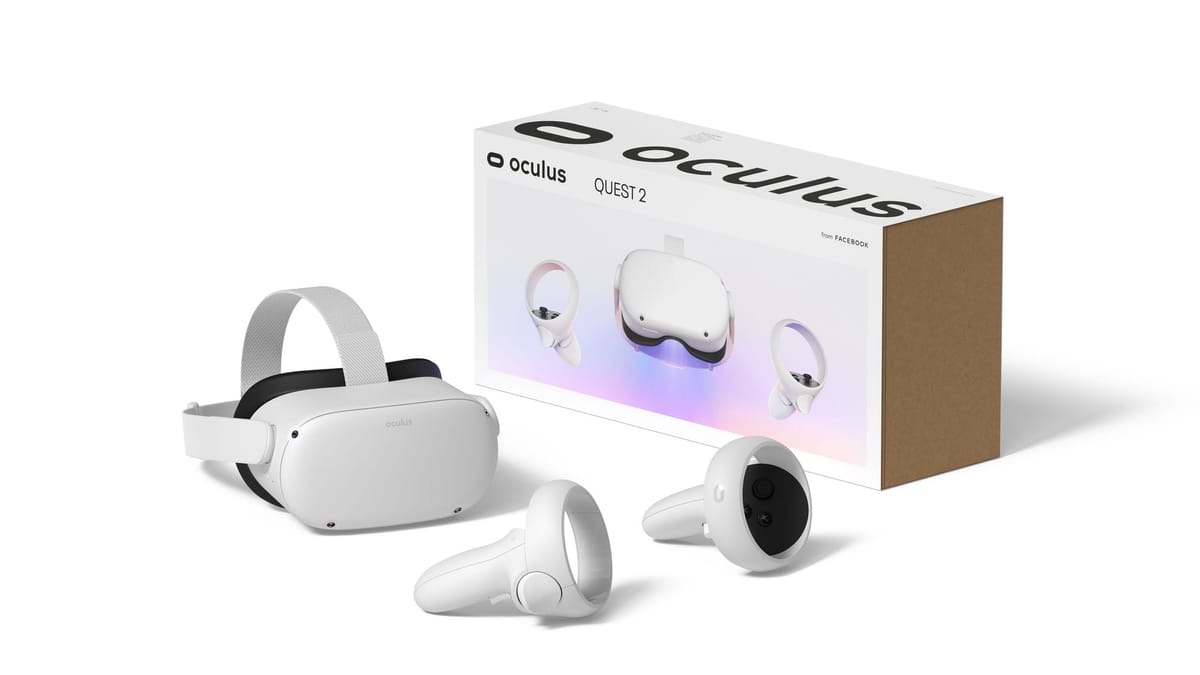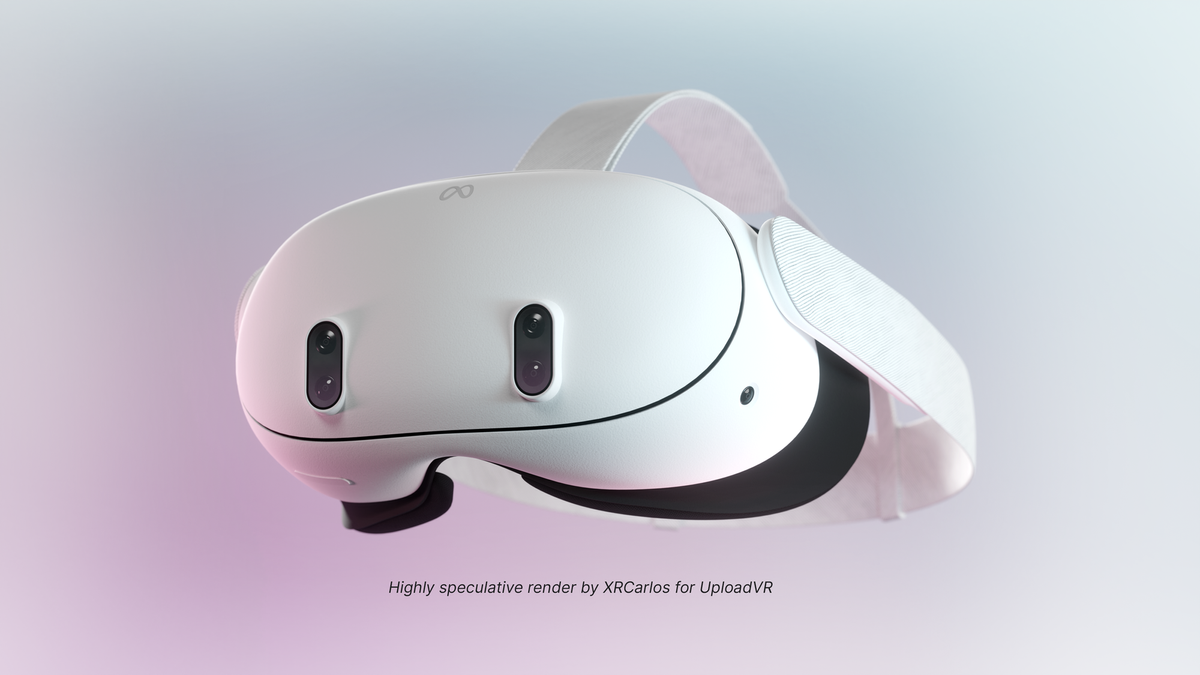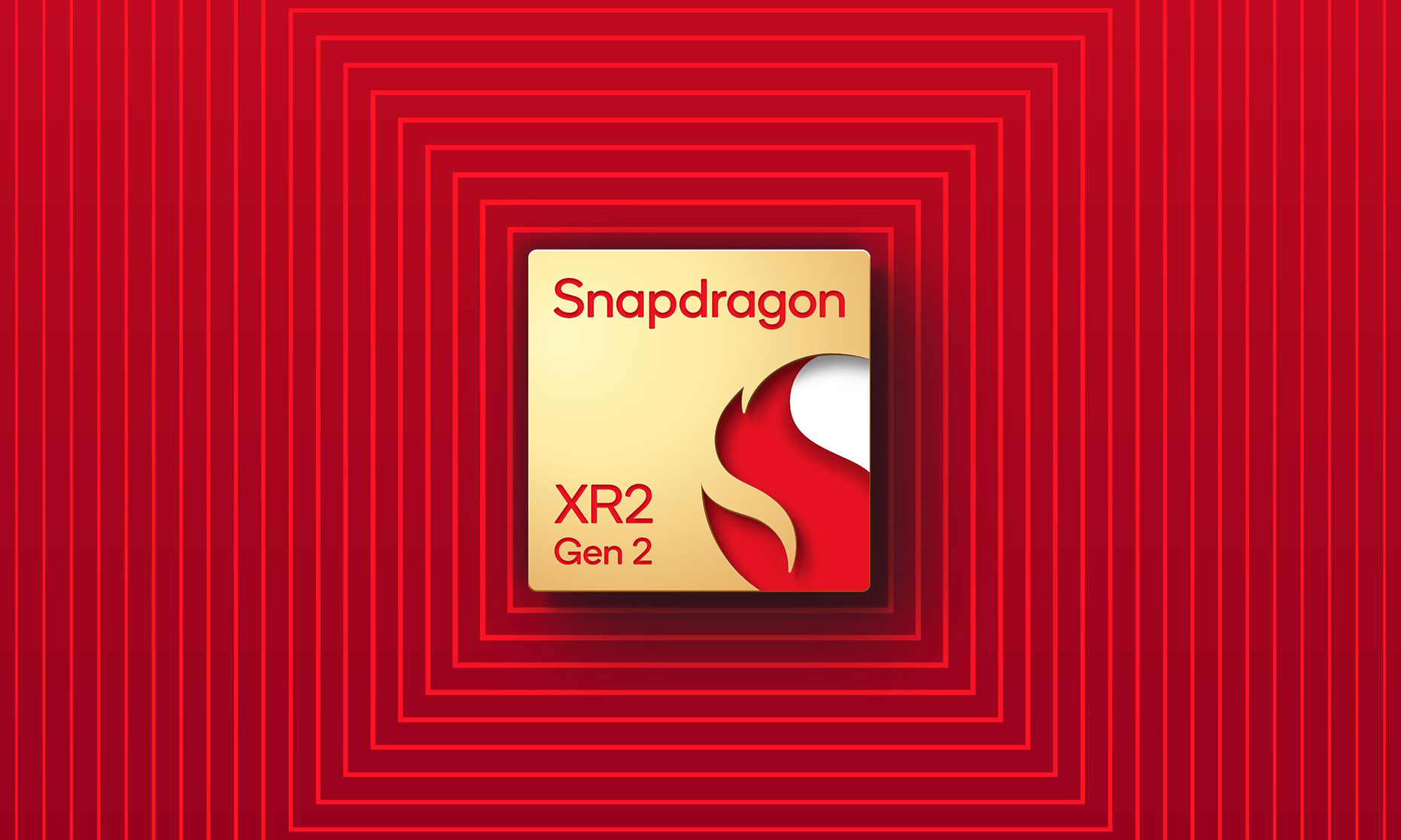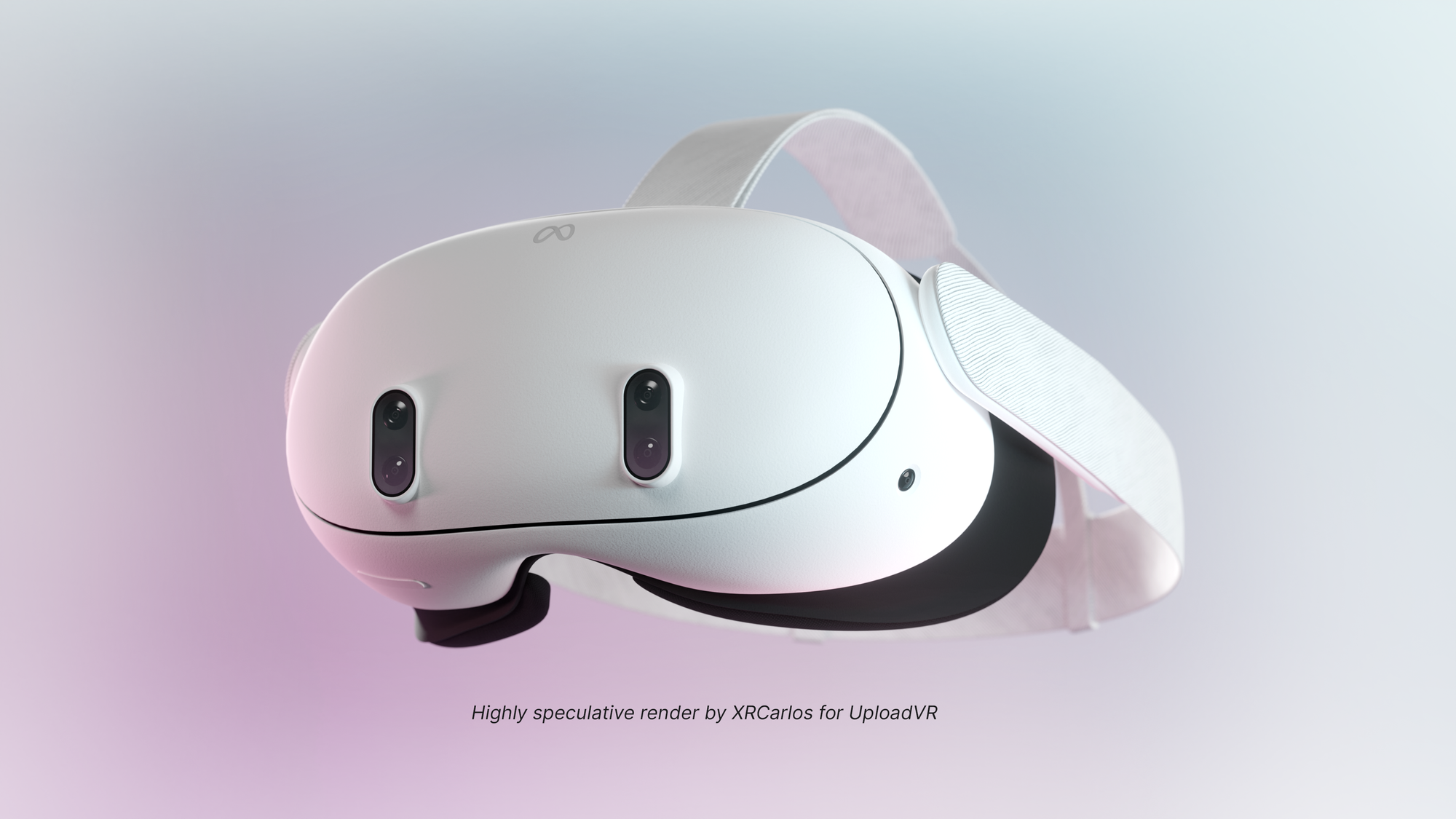There’s strong evidence that Meta is preparing to release a cheaper alternative to Quest 3 to replace Quest 2 in its lineup.
Here’s why we’re almost certain this is happening, and everything we’ve heard so far about the upcoming headset, rumored to be called Quest 3 Lite or Quest 3S.
Quest 2 Is On The Way Out, And Meta Needs A Direct Replacement
Quest 2 launched at $100 lower than the original Oculus Quest, so Meta discontinued it immediately. Quest 3 on the other hand is $500, so Meta has continued to sell Quest 2.
Since Quest 3 launched Meta has repeatedly cut the price of Quest 2, first to $250 and in March to just $200. In April it even cut Quest 2 official accessory prices by more than 50% compared to their original prices.
In February, the higher storage 256GB model of Quest 2 went out of stock completely and was delisted from all retailers, suggesting that production of at least that model has ended.

In recent weeks we’ve also seen the announcement of the first major VR games coming to Quest 3 but not Quest 2, including Alien: Rogue Incursion from Survios and Batman: Arkham Shadow from Meta-owned studio Camouflaj.
Meta’s continued cuts to Quest 2’s headset and accessory pricing, the disappearance of the 256GB model, and the announcement of a flagship first-party game not supporting it strongly suggest the headset is nearing the end of its time on the market.

But as it stands, if Quest 2 was off the market the entry price for the Meta Quest platform would become $500, the 128GB model of Quest 3. Thus to keep growing the VR market as fast as possible, Meta needs to ship a cheaper headset that can run the same content as Quest 3.
A Meta Roadmap Leak Confirmed A Cheaper Headset Coming This Year
Back in March 2023, around ten months before Quest 3 shipped, an internal Meta VR and AR hardware roadmap meeting was leaked to The Verge.
As well as accurately describing details about Quest 3, which had not yet been announced at the time, and Quest Pro 2, the leaked meeting revealed Meta also planned to ship a more “accessible” headset in 2024.

Here’s how Meta’s VP of VR Mark Rabkin described the headset in that leaked meeting:
“The goal for this headset is very simple: pack the biggest punch we can at the most attractive price point in the VR consumer market.”
Bloomberg’s Mark Gurman Described Its Appearance & Price
Bloomberg’s Mark Gurman has a strong track record of reliably reporting Meta and Apple’s hardware and software moves in advance. For example, he reliably reported many details of Oculus Quest 2 and Apple Vision Pro before they were officially revealed or even acknowledged to exist.
A few days before Quest 3 launched, Gurman reported Meta’s next headset will be a “mixed reality headset” that “looks a lot like the Quest 3 but uses less costly components.”
His report claimed Meta is aiming to reach a price of $300, and was at least “considering” shipping the headset without controllers to instead sell them separately. Note, however, that in recent months Mark Zuckerberg has praised Touch Plus controllers as a key reason he thinks Quest 3 is superior to Apple Vision Pro.
A Chinese Analyst Claimed It Uses Fresnel Lenses With XR2 Gen 2
A week after Gurman’s report, a Chinese analyst who accurately reported details of Meta and Pico headsets in the past released his own claims about the headset.

The analyst was the first to report it will use the new Snapdragon XR2 Gen 2 chipset from Quest 3 but paired with the old fresnel lenses from Quest 2 to achieve a lower price.
He claimed the product may be named “Quest 3 Lite” and launch at somewhere between $200 and $300.
The Wall Street Journal Corroborated These Specs
In November, The Wall Street Journal reported that Meta plans to bring a cheaper version of Quest 3 to China via a deal with Tencent.
The deal with Tencent had previously been reported by Chinese news outlet 36Kr and The Wall Street Journal itself, though in those previous reports the headset was reported to be Quest 2.

The Wall Street Journal’s November report described this cheaper version of Quest 3 as using cheaper lenses than Quest 3 but a more powerful GPU than Quest 2, seemingly agreeing with the claims of the Chinese analyst.
Will It Support Color Mixed Reality?
Given the reports so far, it seems clear that this cheaper headset will use the same XR2 Gen 2 chipset as Quest 3 paired with the fresnel lenses. But what’s less clear is whether or not it will have Quest 3 style color passthrough.
By including the XR2 Gen 2 chipset, Meta will enable the cheaper Quest 3 to run the same VR content at the same quality level as the main Quest 3. From a developer perspective, there would be no difference. But if the cheaper Quest 3 didn’t have similar mixed reality capabilities, developers would have to treat it very differently if integrating mixed reality capabilities.

Supporting the idea that the cheaper Quest 3 must include mixed reality, in January a Meta engineering director seemed to directly hint at all future Quest headsets supporting mixed reality. Director of Engineering for XR Tech Paul Furgale said “after Quest 3, I’m convinced that Passthrough and MR will be a standard feature on all future headsets.”
While the dual 4-megapixel color cameras on Quest 3 may have some special properties such as a global shutter, it’s unlikely they are any significant expense. The real cost in passthrough is having a chip that can efficiently process those 8 million pixels per frame efficiently, and the XR2 Gen 2 handles that.
Back in October, Quest firmware dataminer Samulia discovered a new headset codenamed Panther. Samulia previously discovered many of Quest Pro’s specs a year before it launched, as well as Quest 3’s resolution and 3D room meshing capabilities.

The reference to Panther was in a debug feature for “simulating” it on Quest 3 (which was codenamed Eureka). Applying this setting, according to the debug log text, prevents the depth projector being used. This strongly suggests Meta is testing achieving the room setup capabilities the depth projector currently enables without it.
Many people believe that Quest 3’s depth projector is an essential part of how its passthrough works, but this isn’t true. In reality, it’s only used for generating the 3D scene mesh at room setup. The realtime depth map used for reprojecting the passthrough, and exposed by the new Depth API to support dynamic occlusion, is generated by a computer vision software algorithm that compares the views from the two frontal greyscale tracking cameras.
And in theory, the depth projector shouldn’t be necessary to even generate the 3D scene mesh at all. Estimating depth without hardware-level depth sensing is an area of rapid improvement in the field of computer vision today, and the fact that Quest 3 is already doing this suggests the same estimate could be used to populate the scene mesh. Though it would likely be less accurate than Quest 3 and require you to get closer to each wall by walking near it, Meta may see these tradeoffs as acceptable for a markedly lower-cost device.
Summary (TL;DR)
Putting the evidence all together, it’s likely Quest 2 production has ended and Meta is currently clearing out stock to prepare for the launch of a similarly priced direct replacement.
This replacement – whether called Quest 3 Lite, Quest 3S, or something else entirely – will seemingly feature the same Snapdragon XR2 Gen 2 chipset as Quest 3 so it can run the same content at the same graphical fidelity, but use the old fresnel lenses from Quest 2 to achieve a price somewhere around $300.
| Quest 2 | Quest 3 Lite/S | Quest 3 | |
| Chipset | Snapdragon XR2 (7nm) |
Snapdragon XR2 Gen 2 (4nm) |
Snapdragon XR2 Gen 2 (4nm) |
| Lenses | Fresnel | Fresnel | Pancake |
| Passthrough | Very Low Res Black & White |
Decent Res? Color? |
Decent Res Color |
| Entry Price | Launch: $300 Current: $200 |
~$300? | $500 |
It may also support color mixed reality, but potentially with a slower and less accurate room setup process.
In effect, this headset will be a cheaper Quest 3 with a bulkier design and inferior lens clarity. A lower quality but not fundamentally different device. It will let more people enjoy Quest 3 VR graphics – and potentially vastly expand the room-aware mixed reality market too.






